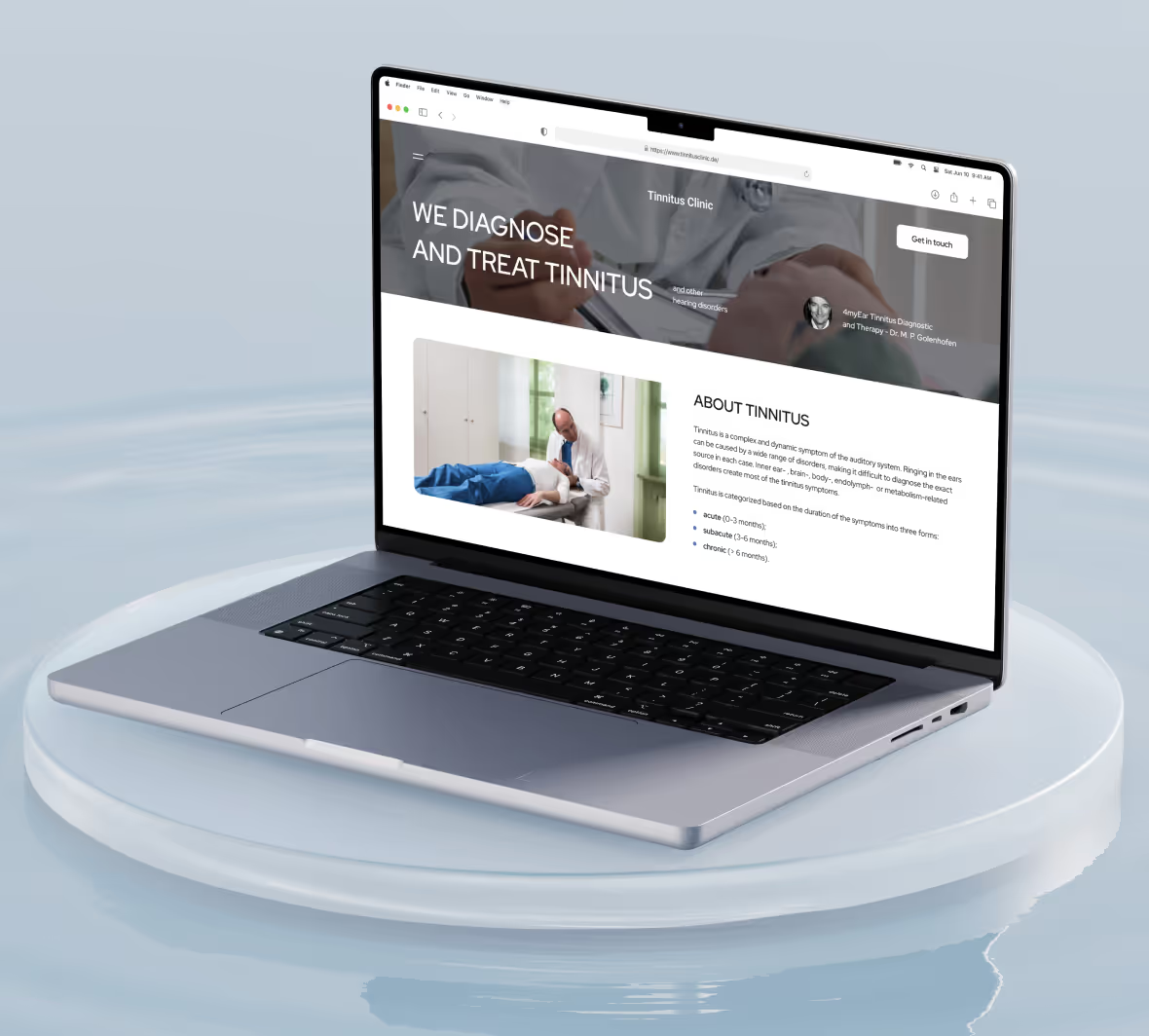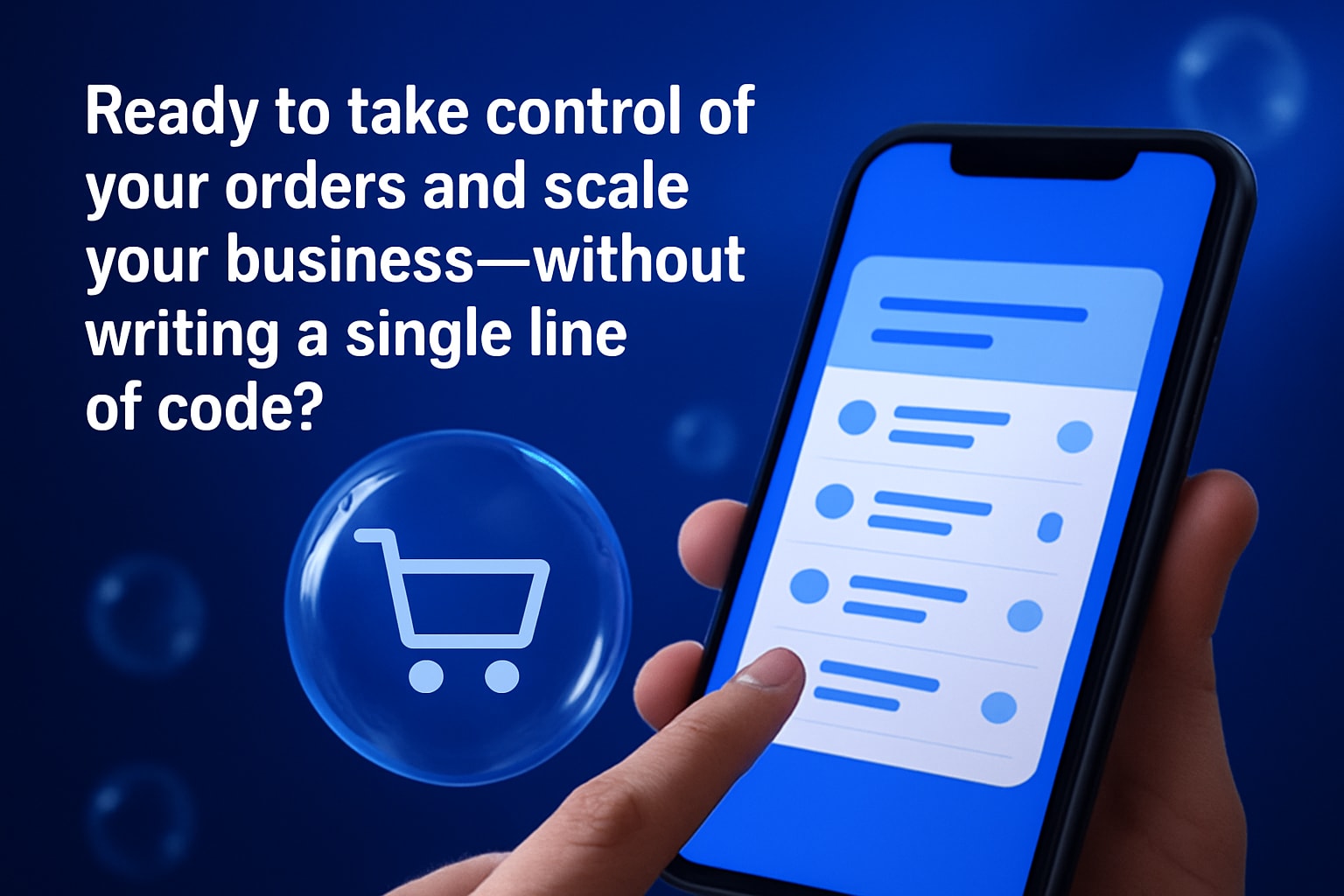
What is bubble developer? A Bubble developer creates web and mobile applications using Bubble.io’s no-code platform. This means they can build functional apps without traditional coding, instead they use Bubble.io's visual interface. In this guide, we’ll explore the role of a Bubble developer, what is a bubble developer, essential skills, and the benefits of this innovative approach.
Key Takeaways
- Bubble is a no-code platform that allows users to develop web applications quickly and intuitively without traditional coding skills.
- Becoming a Bubble developer is accessible to individuals from diverse backgrounds, requiring only logical thinking and problem-solving abilities to succeed in app creation. Instead of learning traditional web development which has a long learning curve you can learn Bubble.io. With dedicated focus you can build complex projects and complex apps after several months, not years.
- Key skills for Bubble developers include mastering the visual development interface, designing effective workflows, and managing data within the built-in database.
- Bubble apps can be built fast, often by a small team or even solo
- A key benefit of Bubble.io is the large Bubble community, own plugins, templates and integrations. This makes it much faster to build all sorts of apps such as internal tools, mobile apps, and web apps.
Understanding Bubble's No-Code Platform
Bubble is a leading no code tools platform designed to accelerate the development of web applications. It enables users, including those without expertise in conventional coding and experienced developers alike, to construct web apps with ease. Bubble’s development methodology is highly visual and user-friendly, equipped with a drag-and-drop interface and an array of pre-constructed elements that streamline the creation process.
The adaptability of Bubble allows it to cater to various project ideas and uses, ranging from social media platforms to complex data management systems and analytical dashboards. Its flexible nature guarantees that individuals can effectively realize their distinctive project concepts. Bubble ensures its applications are easy to improve and maintain thanks the to it's visual editor and extensive documentation. For example, making an app mobile-responsive for optimal performance on different devices is easy with Bubble's visual editor.
One notable aspect of Bubble is its expansive community, which offers an abundance of ready-made templates, plugins, drag and drop elements, and visual elements that can expedite the app-building process significantly. The platform also delivers ample support resources like comprehensive documentation, instructional guides, and practical examples aiding users throughout their journey in app development.
By simplifying tasks such as managing sitemaps, adjusting meta tags, or configuring SEO options for better search engine visibility. Bubble positions itself as a robust no-code solution geared towards non-coders wishing to create intricate web-based applications effortlessly with supportive infrastructure backing them up every step of the way.

Who is a Bubble Developer?
A Bubble developer is adept at utilizing the no-code platform provided by Bubble to craft custom web apps. This role is crucial for the success of no code development, as it entails converting concepts into working apps quickly and with high efficiency. Unlike conventional coders, those who work in bubble development may hail from a wide array of professional arenas, thus offering diverse perspectives and capabilities.
The allure for becoming a developer on this platform lies in its openness even to individuals without any background in programming. Because of its user-friendly nature, anyone equipped with analytical thought processes and abilities to tackle problems can thrive using Bubble’s system. Such inclusive aspects invite participation across various sectors during the app creation cycle, which enhances the products through an amalgamation of distinct insights, notions, and even ai tools.
Individuals specializing as developers within this framework should possess keen attention to both design aesthetics and application logic from start to finish. Essential proficiencies include analytical thinking, resolving complex issues effectively, along with comprehending underlying principles behind app architecture. By leveraging straightforward tools available on Bubble’s interface, developers are empowered to dedicate their energy toward innovation and strategic aspects related to building applications without involvement in intricate coding activities.
Key Skills for Bubble Developers
As a Bubble developer, achieving success hinges on possessing a combination of technical savvy, the capacity for logical reasoning, and design acumen. These competencies are essential in crafting applications that are both easy to use and efficient on Bubble’s no-code platform. Proficiency in areas such as design aesthetics, constructing workflows, managing data systems effectively and seamlessly integrating APIs is fundamental.
In subsequent sections, we delve into three core proficiencies pivotal for Bubble developers: proficiency with the visual development interface provided by the no code platform, devising workflows that optimize efficiency, and adeptly handling data management tasks. Mastery of these components is vital to ensure that the end product not only operates smoothly but also provides an intuitive user experience.
Visual Development Interface
Expert Bubble developers & UI/UX Designers craft visually attractive and intuitive user interfaces. The visual programming interface of Bubble allows individuals to construct web applications by positioning elements through a drag-and-drop method, thereby simplifying the development process. Mastery over these drag-and-drop components, canvas configurations, and design instruments is vital for becoming proficient with Bubble’s visual development environment.
Ensuring that web applications are responsive is fundamental in the realm of Bubble creation. This guarantees that apps can adapt seamlessly across different screen dimensions and devices. Key aspects of a user interface include uniform typefaces, color palettes, icons, and buttons—components that play an integral role in usability. Consequently, it’s imperative for developers to fine-tune their application designs and structures.
Improving both design features and structural layout is key to bolstering performance levels as well as enhancing the end-user experience on mobile platforms in particular. Leveraging specialized plugins coupled with tailoring designs for mobile viewports contributes towards minimizing delays while elevating functional efficiency—a skill set crucially beneficial for any developer utilizing the platform’s tools designed specifically around creating compelling user experiences efficiently within Bubble’s visual development framework.
Workflow Design and Logic
In Bubble, a workflow combines a triggering event and a series of executed actions. Developers define workflows for backend operations using a visual workflow builder, enabling the creation of functional and efficient processes without coding. Understanding workflow design in Bubble is crucial for smooth app functionality and meeting user needs.
Bubble’s workflow editor defines app logic and functionality, allowing developers to create complex interactions and automate business processes. Using design practices that promote scalability and modularity is essential for efficient workflow creation. Optimizing workflows and data structures early in development ensures the application remains scalable and maintainable.
Mastering workflow design and logic enables Bubble developers to create functional, efficient, and scalable software development applications. This skill is essential for building web applications that can grow and adapt to changing user needs and business processes.

Data Management
Data management is crucial in Bubble development. Bubble has a built-in database (this is a PostgreSQL database running on AWS) which enables developers to easily , store, retrieve, manipulate information, create and update records, and handle relationships between data types. Its built-in database system simplifies data management compared to using temporary variables, making it easier to handle complex information structures. In addition, Bubble makes it easy to integrate external databases as well via it's SQL Database Connector plugin of via the API Connector. For example, you can use Supabase, Xano, or any other external database in combination with your frontend built in Bubble.
Bubble’s built-in database powers various applications, from banking software to government records. It facilitates easy access and organization of data, ensuring efficient data usage and management. Understanding privacy rules is critical for managing data securely on the Bubble platform.
Bubble’s database helps manage complex data structures, ensuring efficient data usage and organization. Bubble developers create applications that handle data effectively, providing users with reliable and secure information access.
Benefits of Being a Bubble Developer
Being a developer within the Bubble ecosystem offers the substantial advantage of engaging with no-code development. The platform’s app builder is designed to empower a wide demographic, including those without technical expertise, to craft applications. This democratization of app creation can foster side projects or entirely new professional avenues and proves economically beneficial for emerging startups and smaller enterprises.
The expanding community around Bubble serves as an invaluable asset for novice learners and seasoned developers alike. A culture of cooperation prevails. Peers exchange resources and extend mutual support. Such an active network facilitates the exchange of knowledge and aid, helping members discover solutions while honing their abilities.
Bubble streamlines the process by which users bring prototypes or minimum viable products (MVPs) into being, enabling swift experimentation with concepts that can be tested in quick succession. With tools provided by Bubble specifically geared towards speedy iteration and feedback acquisition on apps under development, progress can be made rapidly. Sustaining these applications post-launch is significantly simplified since most apps can be maintained by only 1 Senior Bubble Developer, rather than an entire team of developers – all leading to marked reductions in ongoing management expenses.
Advanced Features in Bubble Development
A developer skilled in Bubble harnesses both fundamental and sophisticated functionalities to craft applications that align with user requirements. Enhanced features within the realm of Bubble development include API integration, incorporation of custom code through plugins, and fine-tuning for performance enhancements, all contributing to a more functional and streamlined experience in Bubble apps.
Subsequent sections will provide a closer examination of these advanced attributes. We’ll dissect how integrating APIs, employing custom code via plugins, and optimizing application performance can significantly augment the capabilities of Bubble applications. Such features are pivotal when creating intricate and scalable web applications tailored to meet an array of user demands.
API Integration
In the context of Bubble development, API integration pertains to establishing connections with external services for the purpose of data exchange. By incorporating these external services, developers can significantly improve their applications’ capabilities and user experience. RESTful APIs are commonly employed by developers to access and engage with third-party apps.
As developers integrate various external services, they may encounter complex situations like managing nested data structures. Nevertheless, despite such challenges, Bubble simplifies the process of API construction, which facilitates the inclusion of third-party tools and resources into applications.
Acquiring proficiency in API integration within Bubble equips developers with the skills necessary to design web applications that effortlessly communicate with a diverse array of external services and instruments.
Custom Code Plugins
Bubble’s custom code plugins enhance the platform by adding features not inherently available. These additions can include sophisticated user interface elements, financial transaction processing, and analytical tools. By integrating custom code, developers are empowered to design complex and comprehensive applications tailored to particular user requirements.
The utilization of custom code augments the innate functionality of Bubble, facilitating the development of exceptionally specific and customized applications. This adaptability provides developers with a means to bypass restrictions typically associated with no-code development environments, enabling them to construct robust and distinctive web apps that excel within the realm of coded application creation.
Performance Optimization
Ensuring that Bubble apps operate seamlessly and with high efficiency is of utmost importance for performance optimization. When dealing with intricate data queries, such applications may experience sluggishness when transitioning between screens. As the app grows in size, bubble developers might face challenges including limitations on the number of editor seats and encountering performance choke points. To preserve a fluid user experience, it’s vital to tackle these issues promptly.
Bubble offers tools like performance analytics and logs which are instrumental for developers to track how their apps are being used and optimize accordingly. By leveraging these resources, they can pinpoint potential trouble areas early on so that their applications remain adept at supporting an expanding user base.
For Bubble developers aiming to construct scalable applications that provide users with an exceptional experience, mastering the art of performance optimization is fundamental.
How to Become a Bubble Developer
Embarking on a career as a Bubble developer is open to individuals of diverse ages and experience levels, presenting an advantageous entry point into the world of bubble's no code app development. The Bubble Academy paves the way with an array of instructional materials and resources designed for beginners. Institutions such as Airdev, Alegria.academy, and Apptoyou Academy provide specialized courses and intensive bootcamps tailored to professional no-code development through Bubble.
Engaging tutorials available in the realm of Bubble guide learners meticulously through the process needed to create applications without writing code. Pursuing a role in no-code professions that include working with Bubble can bolster your CV by demonstrating your capability for acquiring novel abilities and adapting swiftly to innovative technologies.
Levered by backing from the robust bubble community along with extensive educational tools at one’s disposal, mastering skills in bubble development becomes attainable for anyone aspiring towards a fulfilling professional journey within this space.

Hiring a Bubble Developer
Run a simple but effective hiring process:
- Ask candidates to share their portfolio so you can review the type and quality of work they’ve done
- Request a short Loom video where they explain their best project — this helps you check their communication skills and how well they understand what they’ve built
- After the first interview, give them a paid test task or technical assessment to see how they approach real work and how fast they deliver
This process helps you quickly understand their skills, problem-solving ability, and how well they might fit with your team. A paid test task also shows respect for their time and increases the chances of getting serious candidates.
To reach the right people, post your job on no-code job boards, Bubble forums, and in active no-code communities. These places tend to attract developers who are already working with tools like Bubble.
Finally, be clear in your job description. Outline the project, key tasks, required skills, and any nice-to-haves. Good candidates will only apply if they know what’s expected
The fastest was to find high quality Bubble development support without having to spend extensive time in hiring & recruiting is of course to engage a Bubble Agency. You can check Bubble agency profiles on the Bubble website: https://bubble.io/agencies
Summary
Bubble’s no-code platform revolutionizes the way web applications are developed, making them accessible for a wider audience. As a Bubble developer, you can leverage a range of tools and resources to build functional, visually appealing, and efficient applications. The skills required include mastering the visual development interface, designing workflows, and managing data effectively.
The benefits of being a Bubble developer are numerous, from the accessibility of the platform to the vibrant community and the potential for rapid prototyping. Advanced features like API integration, custom code plugins, and performance optimization further enhance the capabilities of Bubble developers. Whether you’re looking to become a Bubble developer or hire one, the no-code field offers exciting opportunities for innovation and growth.
Frequently Asked Questions
What is Bubble's no-code platform?
Bubble’s no-code platform enables users to build web applications easily through a visual drag-and-drop interface with pre-built components, eliminating the need for traditional coding skills.
This empowers anyone to create functional applications regardless of their technical background.
Who can become a Bubble developer?
Anyone with a logical mindset and problem-solving skills can become a Bubble developer, as the platform is designed for accessibility to non-technical users.
What are the key skills required for a Bubble developer?
To excel as a Bubble developer, you need to master the visual development interface, design efficient workflows, manage data effectively, and integrate APIs seamlessly.
These skills are essential for creating robust applications on the platform.
How can I learn to use Bubble effectively?
To learn Bubble effectively, utilize structured resources such as Bubble Academy, Airdev Bootcamp, Alegria.academy, and Apptoyou Academy.
These platforms provide comprehensive courses that will guide you in mastering the tool.
What should I look for when hiring a Bubble developer?
When hiring a Bubble developer, prioritize their ability to design user-friendly interfaces, problem-solving skills, adaptability to new features, and a robust portfolio of past projects.
This ensures you find a candidate who can effectively meet your development needs.

Ready to build your product?






.avif)


